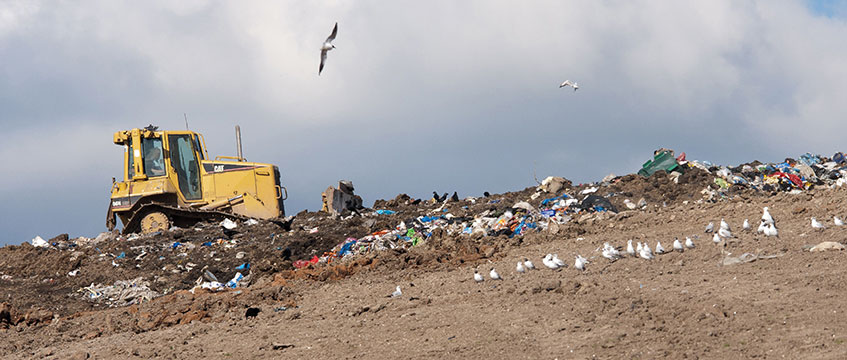The amount of contaminated land in the UK is rising. That the land must be decontaminated is not debatable; however, the liability for cleaning it remains, in some cases, up for debate.
It would be logical to assume that the polluters would bear the burden of decontaminating the affected sites. But what if the polluter no longer exists? Farmers in Powys, Wales, are all too familiar with this concept. In Powys County Council v Price [2017] EWCA Civ 1133; [2017] EGLR 39 – a case that rocked the property industry’s understanding of culpability in terms of sustainability – Welsh farmers were deemed liable for the decontamination costs of a local landfill.
Powys and the Environmental Protection Act 1990
Throughout the 1960s, the Borough of Brecknock owned and operated a landfill site. Farm owners, in search of a place for their waste, entered into tipping licences with the landfill. The licences allowed local farmers to tip their rubbish into the landfill and, in the future, the Borough of Brecknock was to restore the land back to use as an agricultural site.
Time went by and, due to local government reorganisations, Brecknock Council was abolished. The Council of Powys (the council) took over all liabilities from Brecknock. The council assumed responsibility for the landfill and began monitoring pollution in the surrounding areas. Pollution was found in two rivers near the site.
The council began making plans to decontaminate the area and challenged whether it was liable for the damage inherited. It took the case to the High Court, where it was found to have assumed environmental liability for the landfill contamination. The council appealed.
At the appeal, the court took note of part 2A of the Environmental Protection Act 1990 (the 1990 Act). Under the Act, the liability for contamination is placed on “appropriate persons”. Appropriate persons is subdivided into two categories: a class A person, one who caused or permitted the land to be contaminated; or a class B person, in the event that a class A person cannot be found. A class B person is the current owner or occupier of the land. Class A persons cannot be liable if they are deceased or, should the class A person be a company, the company has been dissolved.
Due to the dissolution of the Borough of Brecknock, no class A person could be found. Under the 1990 Act, the persons responsible for contamination and reparations were the landowners, local farmers Mr Price and Mrs Hardwicke. These farmers are now liable for millions of pounds’ worth of damage.
The implications
The implications of this case are fascinating and frightening, as agricultural landowners face liabilities if sites are termed as contaminated land. The case is underpinned by an alarming notion – that historical polluters can step away from the liabilities they create.
This realisation begs a further question about the ways in which landowners, both agricultural and commercial, can protect themselves. The risks of landfills are well-documented: gas leaks, damage from leachate, and settlement all present significant contamination to soil in the areas around a landfill.
Prevention
Landowners and tenants alike should monitor sites carefully to assess both potential and ongoing contamination. Owners should take care to ensure that leases and tenancy agreements have watertight liability clauses, and keep an eye on what their tenants are disposing of, how, and why.
Understanding what tenants are doing is key to determining potential contamination. Conducting due diligence before the tenancy begins, and throughout the tenancy, is also critical to minimising damage. For tenants, much of the protection offered comes from a clear lease agreement, with both parties in complete understanding of their responsibilities. However, much of the protection available to both landlords and tenants is offered through environmental insurance.
The role of environmental insurance in a changing world
Environmental insurance is relatively new, developed over the past 20 years. It offers protection in the event of contamination. With insurance, the farmers who owned the land would not have been liable to pay for the damages out of pocket – a portion of the costs would have been shouldered by the insurer.
The role of environmental insurance has been minimised, and, just as the farmers in Powys were shocked at the liability they had to shoulder, most landowners are not aware of the risks associated with environmental liability.
As the infrastructure of the UK continues to expand, more contaminated sites are being revealed. In most cases, this is not a matter of laziness on the part of the developer, but rather a shift within practices reflective of the damage that the industry has only now realised it has inflicted.
As little as 20 years ago, developers were using practices that harmed the land, as they were considered the industry standard. In a world where more tenants try to step away from environmental liability due to cost, environmental insurance offers protection for all kinds of contamination, beyond that which occurs in landfills.
Environmental liabilities moving forward
What became of the unfortunate Mr Price and Mrs Hardwicke? They are currently appealing to the council on a hardship grant. Should they be successful, the council would determine the contamination took place on a “special site”, moving across a payment of £100,000 supplied by Natural Resources Wales to mitigate the cost. This could still leave Price and Hardwicke responsible for several million pounds’ worth of damage.
As the world focuses on sustainability, many businesses have found themselves vulnerable. Issues that could have been mitigated with environmental insurance are becoming more common. Damages inflicted on land by industry are costly and time-consuming to rectify, but until the industry creates a more environmentally friendly alternative, these damages, and the funds required to fix them, will remain a part of our building landscape.
Duncan Spencer is a director at EDIA Insurance – an appointed representative of Property Insurance Initiatives











